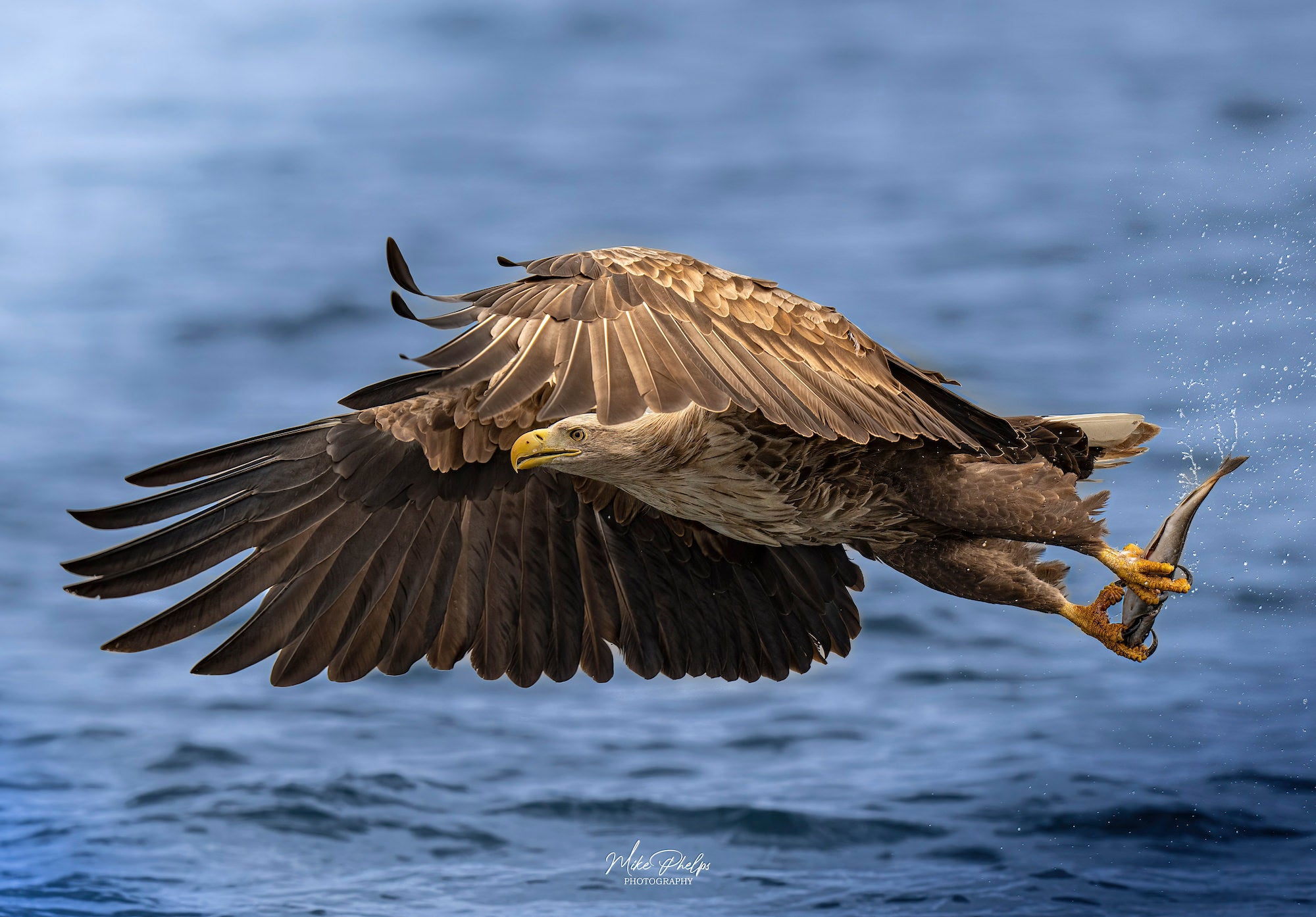Mike Phelps (@phelpsphotographyx) is a UK-based semi-professional wildlife photographer. “I am currently working for a couple of agencies who provide the national papers and media outlets with wildlife images. I go out with subjects in mind then send them to the agencies after my shoot. On this occasion the agencies came asking me for the image which was a lovely change.” We connected with him to learn more about how he captured this eagle image with his Sony Alpha 1 and Sony 400mm f/2.8 G Master.

Photo by Mike Phelps. Sony Alpha 1. Sony 400mm f/2.8 G Master. 1/2500-sec., f/4, ISO 200
Wildlife photographer Mike Phelps explains how he snapped this eagle shot with his Sony Alpha 1 and Sony 400mm f/2.8 G Master.
The Scene
Myself and two other friends, who are also wildlife photographers, had planned the trip to the Isle of Mull six months ago, we all discussed what images we wanted to get and all agreed on our top three subjects, mine were sea eagle, otter and short eared owl. With this in mind I knew the best way to get up close and personal to such an immense bird was to book a chartered boat out of Loch Na Keal, I booked the boat straight away for the first day we arrived on the island. After a 10-hour drive and a short ferry journey we were on the island and excited about seeing these incredible creatures. The skipper of the boat explained that when we spotted an eagle it would more than likely head over to the boat to investigate as they often get fish scraps thrown out. He said he would bring the boat side to give us the best opportunity to get decent images.
In the distance I spotted this huge object coming in low to the water, the skipper was spot on and turned the boat side on, after the bird circled the boat a number of times the eagle spotted the fish changed direction coming in low across the water and into the wind. She didn't even break rhythm and took the fish with ease. Before the trip I had this exact image in my head but knew I would be lucky to capture it, with the Sony Alpha 1 you get eye recognition and it’s the best feeling when you see that little green square appear knowing that the cameras amazing auto focus has spotted and locked onto the eye, for me I knew that this meant the shot would be pin sharp.
The Gear
I shoot with the Sony Alpha 1. I made the decision to move to mirrorless a year ago and did all the research I could, the Alpha 1 was tried and tested and the reviews were incredible. It has been a game changer for me as the auto focus is so good I hardly miss a shot, that paired with the Sony 400mm f/2.8 G Master was the choice for this day and is my primary set up. I was a little worried that due to the shear size of the bird and how close they come into the boat that this might be a fraction too big so I brought my Sony 200-600mm just in case, but after speaking to the skipper who was also a photographer he said that the 400mm would be his perfect lens. As the bird came in she filled the frame perfectly and I knew they would be incredible images.
Getting The Shot
The photo was taken handheld, I wanted to use my arms and body to counteract the bobbing of the boat. I pinned myself hard to the side of the boat and concentrated on keeping the bird in frame whilst I pressed the shutter release, as the bird was flying into the wind she wasn't going that fast – this meant for me that the shutter speed at 1/2500-sec. was more than enough for a sharp image and as it was a bright day my ISO levels would be low. I was happy with the aperture set to f/4 and I opted to use auto ISO and control the exposure with the compensation dial, this would help with the difference in backdrop as the bird passed mountains, sky and water and when I checked this image it was at 200 ISO which was perfect.
The Edit
For the edit I only had to do a few changes in Adobe Lightroom, I used a mask to identify the subject making sure I cleaned up with a brush tool around the feathers then brought some of the shadows up a fraction to show the wing detail, sharpen tool around the head and eye. Then I chase the mask tool again for the subject and inverted it highlighting the background, as the water on the image was a bit gray I brought up the blues so the water looked more realistic and then added a little lateral line mask to the top corner and increased the exposure to give a slight different contrast to the photo. Once I had finished I ran it through Topaz sharpen but only on the subject and turned the auto settings right down to 5 and 10%.
See more of Mike Phelps’ work on Instagram @phelpsphotographyx.



